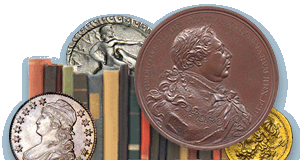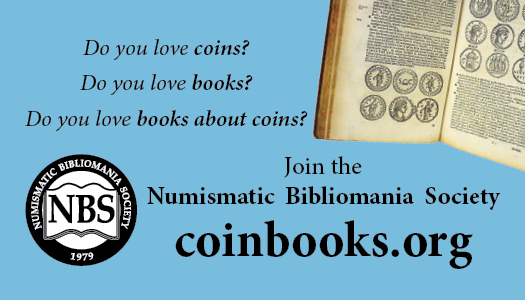
PREV ARTICLE
NEXT ARTICLE
FULL ISSUE
PREV FULL ISSUE
THE COINS OF SARDINIASteve Benner wrote an article in CoinWeek on the coinage of Sardinia. Here's an excerpt - see the complete article online. -Garrett When I began researching this article, I was aware of Sardinia's rich 8,000-year history, but I hadn't realized how limited the information on its coinage was. I've compiled all the available material to write this article, and I hope readers find it enlightening. Sardinia, the second-largest island in the Mediterranean after Sicily, lies approximately 120 miles (200 km) off Italy's west coast, north of Tunisia. It covers an area of 24,100 km² (9,305 sq mi). To its west is the Sea of Sardinia (part of the Mediterranean Sea), and to its east is the Tyrrhenian Sea. To the north, the island of Corsica is separated by the Strait of Bonifacio (Fretum Gallicum). Sardinia is a predominantly mountainous island with a generally high and rocky coastline featuring numerous small islands. Its highest peak, Punta La Marmora, stands at 6,017 feet in the island's center. The mountain ranges are interspersed with wide alluvial valleys and flatlands in the southwest and northeast. The island is divided by a few major rivers, including the Tirso, Coghinas, and Flumendosa. Most of the arable land was historically used for growing cereals and fruit. Punic Coins Carthage began minting bronze coins on Sardinia in the late 4th century BCE, shortly before the First Punic War. The precise location of these mints remains unknown, though Caralis—the island's largest city and an early Carthaginian conquest—is the most probable site. Tharros presents another strong possibility. Figure 2 displays two bronze coins, chosen for their historical significance. The first (Figure 2a) is among the oldest coins minted in Sardinia, while the second (Figure 2b) was produced during the First Punic War (264–241 BCE). Coin 2a features Tanit on the obverse and a horse's head on the reverse, accompanied by a palm tree and a pellet. Tanit, Carthage's principal goddess, was revered as a mother goddess, goddess of fertility, and sky goddess. The horse's head could symbolize Carthage's formidable cavalry and military might. Alternatively, it might allude to the myth of Dido's companions discovering a horse's head at the site Juno designated for Carthage's founding. A third explanation is that "KAKKABH"—Punic for "horse's head"—was an ancient name for Carthage. This design was the most prevalent type of Carthaginian coin. Coin 2b also depicts Tanit on the obverse, with a standing horse on the reverse, a pellet, and the Punic letter "G." This letter may represent a magistrate or minter. Both coins exhibit excellent artistry, particularly Coin 2a. 
Figure 2: CARTHAGE. Sardinia mint. A) Circa 300-264 BCE, AE Shekel(?), 20mm, 5.49 g. Wreathed head of Tanit left / Head of horse right; palm tree to right, pellet below SNG Copenhagen 175; b) 1st Punic War, Circa 264-261 BCE, AE 23mm, 8.07 g. Wreathed head of Tanit left / Horse standing right, pellet below, Punic letter G before. SNG Copenhagen 205. Figure 3 displays two coins minted by the Carthaginians after the First Punic War, during the mercenary revolt. Coin 3a is a bimetallic stater, composed of copper and silver. Its obverse features a male head, while the reverse shows a standing bull with a grain ear behind it and the Punic letters "MG" to the right. The grain ear symbolizes Sardinia's grain production, and the bull represents strength, fertility, and power. The "MG" likely refers to a magistrate. An identical coin found elsewhere was attributed to the Second Punic War occupation; therefore, this coin may either have been misattributed or its design revived during that later period (see Figure 4 discussion). Coin 3b depicts Tanit on the obverse. The reverse features three grain ears and a pellet within a crescent above. The pellet on these coins may indicate the coin's denomination, similar to its function on Roman Republic coins (see below). 
Figure 3: CARTHAGE, Libyan Revolt. Circa 241-238 BCE, Sardinia mint. a) BI Stater, 21mm, 6.85 g. Diademed male head left / Bull standing right; grain ear in background, Punic MG to right. SNG Copenhagen (Africa) (Carthage) 385-6; b) AE Shekel?, 21mm, 5.21 g., Uncertain Sardinian mint. Wreathed head of Tanit left / Three grain ears, pellet-within crescent above, SNG Copenhagen (Africa) 248. During the Second Punic War (218–201 BCE), the Romans suffered a significant defeat at Cannae in 216 BCE. As a result, the Sardinians revolted and briefly regained control of the island, though this re-occupation lasted less than a year. Surprisingly, some Punic Sardinian coins are attributed to this specific period of the Second Punic War.
To read the complete article, see:
Wayne Homren, Editor The Numismatic Bibliomania Society is a non-profit organization promoting numismatic literature. See our web site at coinbooks.org. To submit items for publication in The E-Sylum, write to the Editor at this address: whomren@gmail.com To subscribe go to: Subscribe All Rights Reserved. NBS Home Page Contact the NBS webmaster 
|
